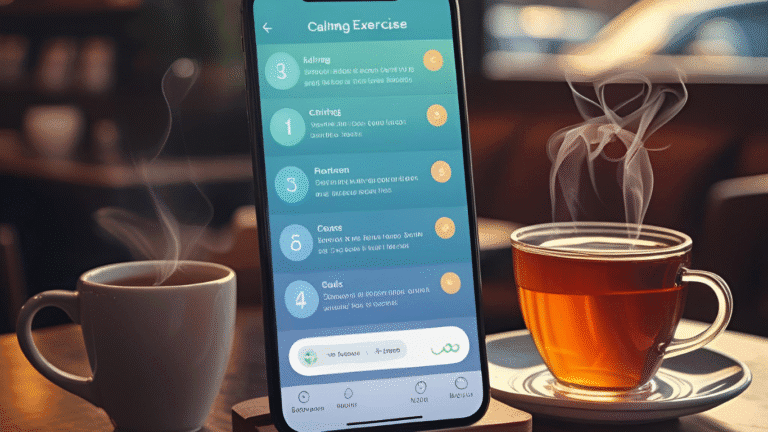Digital Detox That Will Transform Your Life
Digital detox is no longer optional—it’s a necessary response to America’s screen-saturated lifestyle.
The average U.S. adult now spends over 7 hours per day staring at screens, from work to entertainment to social media. This prolonged exposure drains mental energy, disrupts sleep, and chips away at focus and clarity.
A structured digital detox can reset the nervous system, improve mood, and restore our ability to think deeply. By intentionally unplugging—even for a few hours or days—you allow your brain to recover from overstimulation.
Emerging wellness trends like siggi’s digital detox campaign and initiatives such as digital detox ashnow reflect a growing national movement: people want their peace of mind back. Whether it’s through a guided digital detox retreat or a self-managed phone-free weekend, Americans are starting to rediscover the benefits of simply powering down.
What Is Digital Detox?
What is a digital detox, and why does it matter in today’s world?
A digital detox is a deliberate break from screens—especially smartphones, computers, and social media—to reduce stress, regain focus, and restore mental clarity. The goal is to reconnect with the real world by temporarily disconnecting from digital noise.
What is digital detox in practical terms? It’s not about abandoning technology forever—it’s about creating balance. This break allows your brain to reset, your eyes to rest, and your nervous system to slow down.
Digital detox meaning can vary depending on your lifestyle. For some, it might mean avoiding social media after 8 PM. For others, it could involve a full weekend offline. Even small changes—like keeping your phone out of the bedroom—count as digital detoxing.
For example:
Imagine spending Sunday morning without checking your phone—no notifications, no emails, just a quiet walk, reading a book, or sipping coffee while journaling. That’s a simple digital detox in action.
Done regularly, even short detoxes can lead to meaningful changes in how you sleep, think, and feel.
The Impact of Digital Overload on the Brain and Body
The effects of constant connectivity are more severe than most realize. While technology is a powerful tool, overuse disrupts essential cognitive and physical functions. That’s why more professionals now recommend a structured digital detox as part of a healthy routine.
1. Sleep Disruption
Excessive screen time—especially in the evening—interferes with melatonin production. The blue light from devices delays sleep onset and lowers sleep quality. Without a digital detox, many Americans struggle to enter deep, restorative sleep.
2. Anxiety and Focus Issues
Studies show that frequent device use correlates with higher levels of anxiety, especially in young adults. Constant notifications and app-switching fragment attention. Over time, this leads to increased mental fatigue, brain fog, and burnout. Regular digital detoxing reduces overstimulation and improves emotional regulation.
3. Reduced Attention Span
Research indicates that average human attention spans have declined steadily over the past decade. Continuous scrolling and multitasking train the brain for distraction. A digital detox retreat, even for a day, can help rebuild your capacity for sustained focus.
Average U.S. Screen Time vs. WHO Recommendation (2020–2025)
| Year | U.S. Average Screen Time (hrs/day) | WHO Recommendation (hrs/day) |
|---|---|---|
| 2020 | 6.9 | 2 |
| 2021 | 7.2 | 2 |
| 2022 | 7.4 | 2 |
| 2023 | 7.5 | 2 |
| 2024 | 7.3 | 2 |
| 2025 | 7.1 (projected) | 2 |
This table highlights a consistent overuse of screens in the U.S.—more than 3 times the recommended daily limit. It underscores the growing relevance of strategies like digital detoxing and participation in a digital detox retreat or programs such as digital detox ashnow.
Digital Detox Benefits You’ll Notice Quickly
A well-planned digital detox doesn’t just reduce screen time—it delivers measurable improvements in your body, mind, and relationships. Most people begin to feel the effects within the first 24 to 72 hours.
Emotional Benefits of Digital Detoxing
One of the first things people report after starting a digital detox is emotional relief. Without constant notifications and scrolling, the brain gets a chance to reset. Anxiety levels drop, mental clarity returns, and mood becomes more stable.
These emotional shifts are supported by clinical studies. Participants in structured digital detox retreats report improved self-awareness and reduced irritability. Programs like siggi’s digital detox highlight the emotional strain of being “always on”—and the healing power of logging off.
Physical Relief After a Digital Detox Retreat
Prolonged device use affects posture, sleep, and even eye health. Just a few days into a digital detox retreat, participants often notice less neck tension, fewer headaches, and better sleep quality.
Digital screens—especially before bed—disrupt melatonin cycles. Reducing screen time, particularly at night, leads to deeper, uninterrupted rest. That’s one reason initiatives like digital detox ashnow emphasize offline routines in the evening.
Posture also improves when you’re not hunched over a device. By creating natural breaks in your tech usage, digital detoxing encourages more physical movement, which benefits circulation and joint health.
Sharper Focus and Better Productivity
Once the constant digital noise fades, the brain regains its ability to focus. A digital detox helps restore working memory and supports long-term cognitive performance. With fewer distractions, many people find they complete tasks faster and more effectively.
Stronger Real-World Relationships
Digital overload often isolates us from those around us. Detoxing creates space for meaningful face-to-face connections. Whether it’s a conversation over dinner or undistracted time with your kids, the benefits of digital detox extend beyond the screen.
Types of Digital Detox: Which One’s Right for You?
Not all unplugging methods are the same. Different people need different approaches, depending on their routines, habits, and goals. Below are the most common types to consider if you’re exploring a healthier relationship with screens.
1. Weekend-Only Detox
A weekend reset is the easiest and most flexible starting point. It involves stepping away from non-essential digital tools for one or two days. This short-term approach is popular among professionals looking to recharge without long-term disruption.
2. Full-Week Retreat
For deeper restoration, some opt for a structured, week-long digital detox retreat. These immersive experiences typically involve travel to nature-based settings with no Wi-Fi, limited device access, and a focus on mindfulness. They’re especially helpful for those facing burnout or anxiety.
3. App-Specific Detox
If your stress stems from a particular platform—like social media or news apps—you might benefit from an app-targeted break. Instead of logging off completely, you reduce use of the most distracting or emotionally draining apps while keeping essential tools active.
This targeted strategy helps individuals stay functional while still improving mental clarity.
Public Examples and Initiatives
Wellness campaigns like siggi’s digital detox have shown how structured breaks can build healthier digital habits. These efforts highlight the growing national interest in screen-life balance.
You can also explore public programs such as digital detox ashnow, which promote community-driven efforts to unplug. These are often supported by educational organizations and mental health professionals aiming to reduce tech fatigue on a larger scale.
How to Do a Digital Detox: Expert Guide
Knowing how to do a digital detox effectively is the key to long-term success. A thoughtful plan reduces overwhelm and increases your chances of lasting impact. Follow these expert-backed steps to begin your screen-free journey with clarity and purpose.
1. Audit Your Screen Time
Start by tracking your daily device use with precision and honesty. Most modern smartphones include built-in screen time analytics that log how many hours you spend on each app, how often you pick up your device, and which times of day you’re most active. This raw data forms the foundation of any effective digital reset.
Take time to review a full week of usage. Are you checking email late at night? Is social media consuming more time than expected? Do certain apps spike your anxiety or reduce your focus? By identifying these patterns, you begin to uncover the triggers that lead to unconscious scrolling, the time sinks that affect your productivity, and the emotional cues tied to device dependence.
Without this honest audit, a digital detox becomes a shot in the dark. But with it, you gain insight into what needs adjusting, what’s essential, and what’s simply digital clutter. This awareness is the first, and perhaps most important, step toward meaningful change.
2. Choose a Detox Duration
Set a realistic time frame that aligns with your lifestyle and digital dependence level. If you’re new to unplugging, begin with a modest goal—such as 24 to 48 hours. This short commitment allows you to test boundaries without overwhelming your routine. It also builds confidence by proving that screen breaks are both possible and restorative.
For those already aware of their tech habits or seeking deeper change, a longer challenge—such as five to seven days—offers a more transformative experience. Extended breaks allow your nervous system to fully reset, your sleep patterns to stabilize, and your concentration to return to baseline. This is often the duration used in formal digital detox retreats, where environmental support removes temptations altogether.
The key is not duration alone, but definition. Vague goals like “I’ll use my phone less this week” tend to fail. Instead, be specific: “I will not check social media or non-essential apps from 7 PM to 9 AM for three days.” Defined time frames create structure, accountability, and a clear beginning and end—critical factors for a successful digital detox.
3. Set Clear Boundaries
Outline exactly what’s off-limits and when. After defining your detox duration, the next step is to set firm but realistic boundaries around device use. Decide which digital activities are essential (e.g., work emails, navigation) and which ones are optional or problematic—such as social media, streaming, or news browsing.
You might choose to avoid screens entirely after 8 PM to protect your sleep cycle. Or you could block specific platforms like Instagram or TikTok during work hours using app timers or third-party blockers. Some individuals even remove apps temporarily from their phones to reduce temptation during the detox period.
Clarity is essential here. Rather than vague goals like “use my phone less,” opt for rules such as “no social media between dinner and bedtime” or “no phone in the bedroom.” These small, well-defined commitments are easier to follow and more likely to yield results.
Don’t aim for perfection. Digital detoxing is not about total withdrawal—it’s about regaining control. Focus on consistency, not intensity. When the rules are sustainable, they’re more likely to evolve into long-term habits that support your mental clarity, focus, and emotional well-being.
4. Prepare Offline Alternatives
Plan screen-free activities in advance to fill the digital void with purpose. One of the biggest mistakes during a digital detox is failing to prepare for the moments when you’d normally reach for a screen. Unstructured downtime often leads to boredom, which can quickly trigger a relapse into scrolling habits.
To avoid this, proactively choose analog activities that nourish your mind and body. For example, reading a physical book can engage your intellect without digital stimulation. Walking outdoors provides both movement and a mental reset. Journaling or writing taps into reflection and creativity. Cooking from scratch becomes a mindful act of nourishment.
The key is to replace—not just remove—digital habits. If evenings are typically filled with streaming, consider substituting that time with board games, puzzles, or hands-on hobbies like drawing, gardening, or crafting. Even simple actions like organizing a room, tending to plants, or calling a friend help create a sense of fulfillment and momentum.
When your detox is filled with meaningful, enjoyable alternatives, the process stops feeling like deprivation. Instead, it becomes an opportunity to rediscover parts of yourself and your environment that were previously overshadowed by screens.
5. Get Accountability
Share your digital detox plan with others to create accountability and support. Let trusted friends, family members, or coworkers know about your intention to unplug. Transparency not only reinforces your own commitment but also opens the door for encouragement and understanding from those around you.
You might invite someone to join your detox—whether for a few hours or a full day. Doing it together transforms the experience from a solo restriction into a shared challenge. Even if they don’t participate directly, asking them to check in on your progress helps keep you focused. This communal element significantly increases follow-through rates.
Additionally, accountability can prevent misunderstandings. For example, if you’re not responding to texts or emails during your detox window, letting others know in advance avoids confusion and builds respect for your boundaries.
Some people find it helpful to post a simple status update or calendar reminder that signals their detox period. Others create a shared journal or group chat (used only before and after the detox) to track wins, struggles, or unexpected benefits. The goal is not external validation but internal reinforcement—reminding yourself that you’re not doing this in isolation.
When your digital detox becomes a collective conversation rather than a private struggle, it feels empowering rather than restrictive. That shift in mindset makes the effort both sustainable and deeply rewarding.
Success Tips
- Use physical alarms instead of phones.
- Disable non-essential notifications.
- Keep devices out of reach during meals and bedtime.
- Replace idle scrolling with scheduled breaks outdoors.
Common Mistakes to Avoid
Going “cold turkey” without a plan is one of the most common reasons digital detoxing fails. Abruptly cutting off all digital access may feel bold, but without a structure in place—such as scheduled offline activities or time-limited restrictions—most people end up backsliding within hours. A planned approach creates sustainability and reduces the shock of sudden disconnection.
Failing to identify the root cause of overuse is another key misstep. For many, excessive screen time isn’t the problem itself, but a symptom. You might scroll out of boredom, loneliness, or stress. Until these triggers are acknowledged and replaced with healthier coping strategies, the pattern often returns post-detox.
Ignoring emotional ties to digital habits can also hinder progress. Devices offer more than convenience—they provide escape, validation, and sometimes even a sense of identity. Pretending these emotional hooks don’t exist makes it harder to break free. Recognizing your attachment is the first step toward shifting it.
Understanding these pitfalls helps you prepare for them. A successful digital detox isn’t just about cutting screen time—it’s about creating the emotional and logistical framework to thrive without it.
If you’re wondering how to do a digital detox without disrupting daily responsibilities, start small and build gradually. Success lies in creating a repeatable system that fits your life—not in cutting off tech completely.
FAQ: Common Questions About Digital Detox
What is a digital detox and why is it important?
A digital detox is a temporary break from digital devices—such as smartphones, computers, and social media—to reduce stress and reclaim focus. It allows the brain to rest, improves sleep, and restores emotional balance. In today’s hyperconnected world, this pause is essential for mental health, cognitive clarity, and meaningful relationships. If you’ve ever asked what is a digital detox or what is digital detox, the answer lies in its power to help you reset.
Can I do a digital detox without giving up my job or phone?
Absolutely. A detox doesn’t have to mean total disconnection. You can define boundaries around non-essential use, like disabling social media during work hours or turning off non-urgent notifications. Many successful digital detoxing strategies involve keeping necessary tools (like your phone or laptop) but using them intentionally. It’s about control, not complete avoidance.
How often should I do one?
It depends on your screen time habits and lifestyle. Many people benefit from a weekend detox once a month, while others integrate shorter breaks—like screen-free evenings—into their weekly routine. A full digital detox retreat once or twice a year can provide a deeper reset. The key is consistency and reflecting on what your mind and body need.
Are digital detox retreats safe and science-backed?
Yes. Many digital detox retreats offer structured environments that encourage mindfulness, sleep hygiene, and reduced screen exposure—often supported by health professionals or wellness experts. Studies suggest that time away from screens can improve memory, reduce anxiety, and boost emotional well-being. Initiatives like siggi’s digital detox and digital detox ashnow show growing public interest and trust in these experiences.
Final Thoughts: Why This Digital Detox Is Worth Your Time
In a world where the average American spends nearly half their waking life in front of a screen, a digital detox is no longer a luxury—it’s a necessity. From clearer sleep cycles to sharper focus and deeper human connections, the benefits of digital detoxing go beyond the physical. They touch every corner of how we live and feel.
Whether you’re trying a weekend break, exploring a full digital detox retreat, or simply learning how to do a digital detox at home, every step toward mindful screen use counts. Public efforts like siggi’s digital detox and digital detox ashnow prove that the movement is growing—for good reason.
Start small. Be intentional. You don’t have to disappear to make a difference—you just need to disconnect with purpose.
What About You?
Have you ever tried a digital detox? What worked—and what didn’t?
Share your thoughts in the comments—your experience might just help someone else take the first step.

Amber Hexshot is a creative blogger with a specialty in home décor, where she shares fresh ideas on design, styling, and creating inviting spaces. With a keen eye for detail and a love for transforming everyday rooms into inspiring environments, she enjoys helping readers bring beauty and personality into their homes. Beyond décor, Amber also explores other topics such as lifestyle, travel, and personal growth, offering a wide variety of content that resonates with her audience.
When she’s not writing, Amber loves visiting art galleries, experimenting with DIY projects, and discovering unique design trends from around the world. Her approachable tone and practical advice make her blogs both inspiring and easy to follow.


